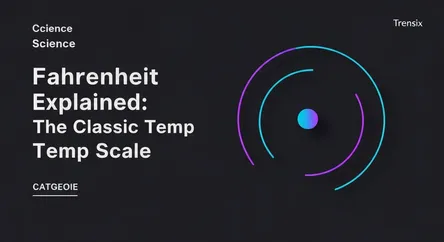Science
Fahrenheit Explained: The Classic Temp Scale

An explainer on the Fahrenheit temperature scale, its history, and why it remains in use in the United States and a few other countries.
What is it?
The Fahrenheit scale is a system for measuring temperature, created in 1724 by German physicist Daniel Gabriel Fahrenheit. On this scale, the freezing point of water is defined as 32 degrees Fahrenheit (°F) and the boiling point is 212°F, placing the two points 180 degrees apart. Initially, the scale's zero point (0°F) was set using the temperature of a freezing brine solution. While most of the world now uses the Celsius scale, Fahrenheit remains the official scale in the United States, its territories, and a few other nations like the Cayman Islands and Liberia.
Why is it trending?
Fahrenheit's relevance persists largely due to its continued use in the United States, creating an ongoing contrast with the globally dominant Celsius scale. Historically, the British Empire spread the Fahrenheit scale, but most countries, including the UK, transitioned to the metric-based Celsius scale during the 20th century. The U.S. attempted a voluntary metrication process in the 1970s, but widespread public resistance to changing familiar systems for weather and daily life meant Fahrenheit remained entrenched. This enduring usage keeps it a topic of discussion in international communication, science, and culture.
How does it affect people?
For people in countries using it, the Fahrenheit scale is an intuitive part of daily life, particularly for understanding weather forecasts. Some argue it is more relatable to human experience, where 0°F is extremely cold and 100°F is very hot. However, its use creates challenges in a globally connected world, often requiring conversions for international travel, scientific collaboration, or even following cooking recipes from other countries. This difference can lead to simple confusion or significant errors, such as the notable failure of a Mars orbiter due to a mix-up between imperial and metric units.